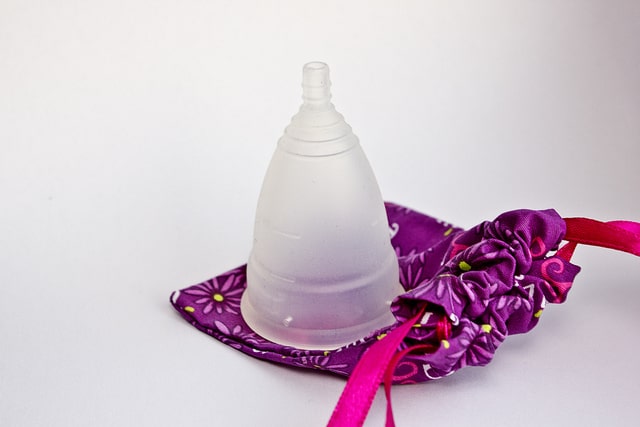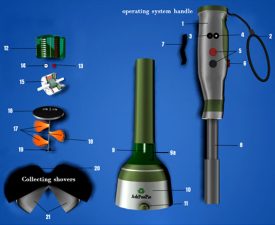Do you use homemade pads or moon cups? There are so many alternatives to wasteful products that choke our bodies and our natural environment.
The environment is big news right now. Our oceans are full of plastic waste and there are bulging landfill sites all over the world. The biggest problem with the never-ending stream of human waste is that most of it is likely to stick around for a very long time.

Menstrual cups in colors of the rainbow
One of the biggest issues is plastic. Each year, we produce millions of tons of the stuff, and every day, around eight million bits of plastic waste end up in the ocean. Conservative estimates say there are around 51 trillion microscopic pieces of plastic in the ocean right now. None of this plastic waste ever goes away. Larger plastic objects break down slowly, over many decades, until they become microscopic plastic fragments, which are swallowed by marine animals and eventually consumed by us and them.
The damage caused to our environment is shocking. You might think that photos of marine animals lying dead on a beach, their stomachs full of plastic waste, does not affect you directly, but it does. Plastic pollution causes knock-on effects, such as chemical contamination of waterways, which ends up in our drinking water. It’s also unpleasant to walk along an idyllic beach and spot used tampons and sanitary towels washed up by the tide.
Bad for the Environment
Tampons and sanitary towels are bad for the environment. They are not sustainable and cause long-term, lasting damage to the world around us. Most of the materials used to manufacture tampons and sanitary towels are non-recyclable, which means they end up in landfill sites and floating in oceans.
On average, women use around 11,000 disposable sanitary products in one lifetime. That’s a lot of waste. Even organic tampons, which are made from organic cotton, are not good for the environment. They do break down, but it’s incredibly slow. In addition, most of the packaging, and in the case of many brands of tampons, the applicators, are made from plastic, so they never break down.
One way to do your bit for the environment is to switch to reusable sanitary products.
Menstrual Cups and Period Panties
Menstrual cups and period panties are more eco-friendly than tampons and sanitary towels. Instead of being discarded after each use, menstrual cups and period panties are reusable and will last for several years.
Menstrual cups are designed to be worn internally, where they collect menstrual blood. Period panties look like regular underwear, except they have a thick, super absorbent layer to soak up period blood and prevent leaks. In both cases, you rinse or wash them rather than throw them away.
There are many different brands of both out there, including Diva Cup, Lunette, Thinx, and Lunapads. You can read menstrual cup and period panty reviews online if you need some help and advice. Alternatively, ask your friends what they use or connect with other users on social media; there is a whole sub-culture of women who actively promote plastic-free periods on Instagram and YouTube. By making the switch to reusable sanitary products, you can join the community and the conversation.
Aa well as being much better for the environment, reusable sanitary products are also much better for your pocket.
Period Poverty Around the World
Women spend around $100 on sanitary products every year. This is a big expenditure for girls and women in low-income households, and in many rural areas, women and girls are forced to make do with rags to soak up their period blood.
Reusable sanitary products are rinsed/washed and reused. With the right care, they can last several years, which saves the user a lot of money.
Menstrual cups and period panties are also a lot easier to use. Once you get used to the technique of inserting and removing a menstrual cup, you will wonder why you haven’t made the switch before. It is far easier removing and emptying a menstrual cup when there is no bathroom available. As long as you have some clean water to rinse your hands and the cup, you are good to go.
Blood as a fertilizer on farms?
In addition, menstrual blood is good for the environment and can be used as an iron-rich fertilizer for plants and vegetables.

Human waste including blood, can be used for fertilizing plants. With caution.
There are many reasons to make the switch to reusable menstrual products such as menstrual cups and period panties. If you’re not convinced yet, try it for one month and see how you get on?




